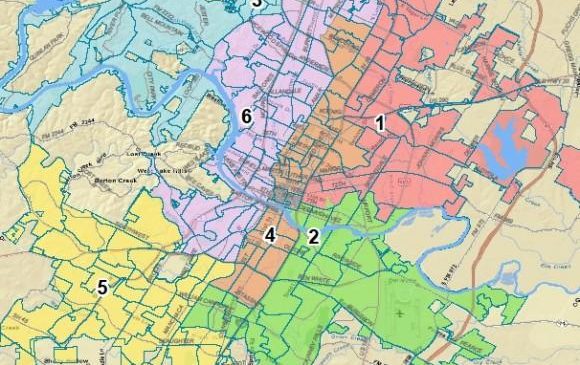Housing committee hears about district goals
Thursday, April 18, 2019 by
Jo Clifton Two years ago this month, Austin City Council adopted its first strategic housing blueprint, with the goal of developing metrics to define how the city should allocate its resources to produce affordable housing for residents earning less than 80 percent of the median family income. Over the next 10 years, the city is aiming to produce or preserve 60,000 such units.
One of the biggest questions the city faces is where to put those units.
The city hired consultants from Asakura Robinson and Austin Community Design and Development Center to help the Neighborhood Housing and Community Development Department analyze how the housing should be dispersed.
Alex Miller of Asakura Robinson explained to the Council housing committee on Tuesday that her group analyzed each district with respect to what are called high-opportunity areas, gentrifying areas, areas with high-frequency transit stops and Imagine Austin centers, and geographic dispersion of affordable housing. High opportunity refers to neighborhoods with access to amenities or community attributes that can increase economic mobility for their residents. Then they ranked the districts by those qualifications.
Miller told the committee that the city should strive to save and develop the most affordable housing in Council districts 6 and 10, with District 8 coming in third. The districts that ranked lowest in terms of opportunity, in particular, were East Austin districts 2, 3 and 4, with District 1 ranking slightly higher.
District 3, which is the closest of the East Austin districts to downtown, had the most gentrifying areas, with consultants identifying 4,980. District 1 was not far behind, with 4,257 gentrifying areas, and District 2 had 2,392. District 4, which is geographically smaller, had 1,120 gentrifying areas and was ranked 10th among the districts in terms of needing more affordable housing.
According to the consultants, Northwest Austin’s District 6 should have 8,590 new affordable units and West Austin’s District 10 should have 8,456, while Southwest Austin’s District 8 should have 7,217 and Northeast Austin’s District 1 should have 7,086. The consultants also said District 7 should have 6,651 more affordable units over the next 10 years, while District 3 should see an increase of 6,295 units.
The city needs to construct or encourage the building of 4,492 affordable units in District 2, the consultants said, and 4,473 in District 5. That leaves the more centrally located District 9 with a projected need of 3,635 affordable units and District 4 with 3,105.
Council Member Greg Casar, the chair of the committee, expressed some frustration that his District 4, as well as District 9 in Central Austin and District 5 in central South Austin did not rank more highly because of current and future planned bus routes. Council Member Ann Kitchen said although future routes are planned for District 5, including a high-frequency bus on Manchaca Road, her district currently only has one high-frequency route, which serves South Lamar.
Places farther from downtown, such as District 6, get a higher ranking because they have more space, which leads to placing affordable housing on the outskirts of the city, Casar said. “Part of the hope with the high-frequency transit was to correct for that somewhat by trying to concentrate more into smaller districts that have more high-frequency transit, but when you look at the allocation for high-frequency transit for District 9, for example,” as compared to District 1, the latter appears to have more high-frequency transit. The same is true, he said, for District 4 and District 8. That struck him as counterintuitive.
The city has said that to create transit-supportive housing, it should aim to put 15,000 of the 60,000 affordable units within a quarter-mile of either high-frequency transit or a corridor or center identified in Imagine Austin, the city’s comprehensive plan.
After the meeting, Kitchen told the Austin Monitor that she was excited to see the plan, noting that, “By establishing targets that makes it more likely that we’ll get results, and we’re aligning our priorities with the targets we set. We’ve got a range of priorities that we set with the city when we passed the blueprint. So now we’re taking it to the next level …. And what will really be telling is when we make sure our investments align with what we are working towards. What’s really important to me is to get results. And if we don’t carry our policy all the way through to actual on-the-ground results, we won’t get where we need to be.”
Image courtesy of the city of Austin.
The Austin Monitor’s work is made possible by donations from the community. Though our reporting covers donors from time to time, we are careful to keep business and editorial efforts separate while maintaining transparency. A complete list of donors is available here, and our code of ethics is explained here.
You're a community leader
And we’re honored you look to us for serious, in-depth news. You know a strong community needs local and dedicated watchdog reporting. We’re here for you and that won’t change. Now will you take the powerful next step and support our nonprofit news organization?






